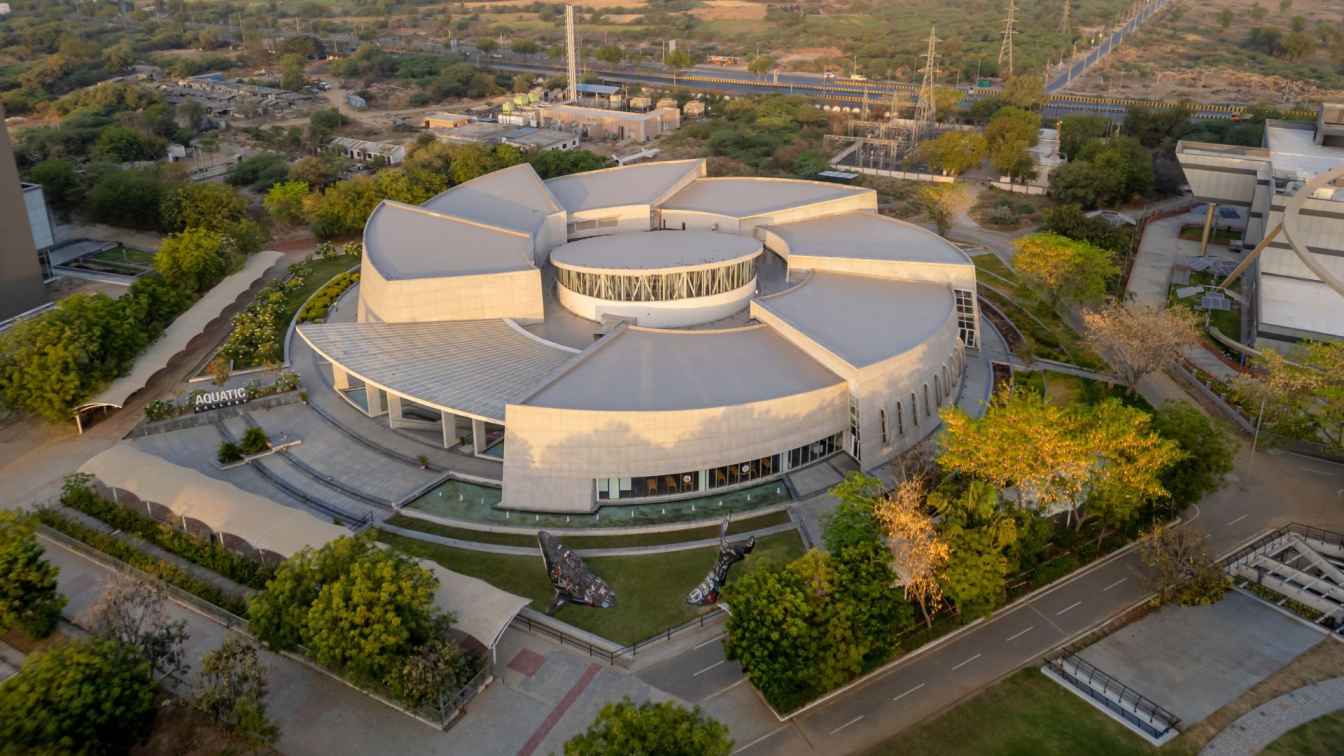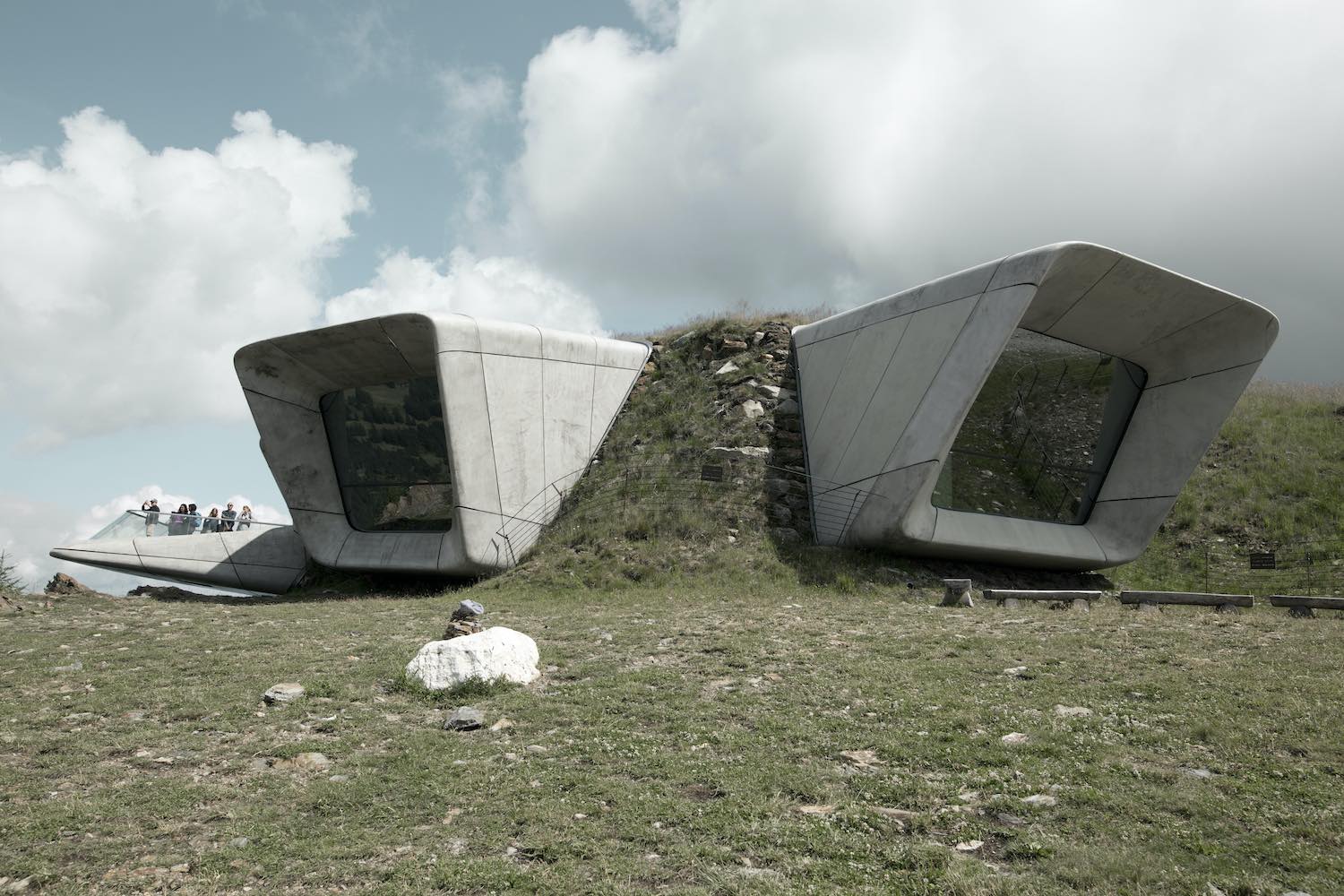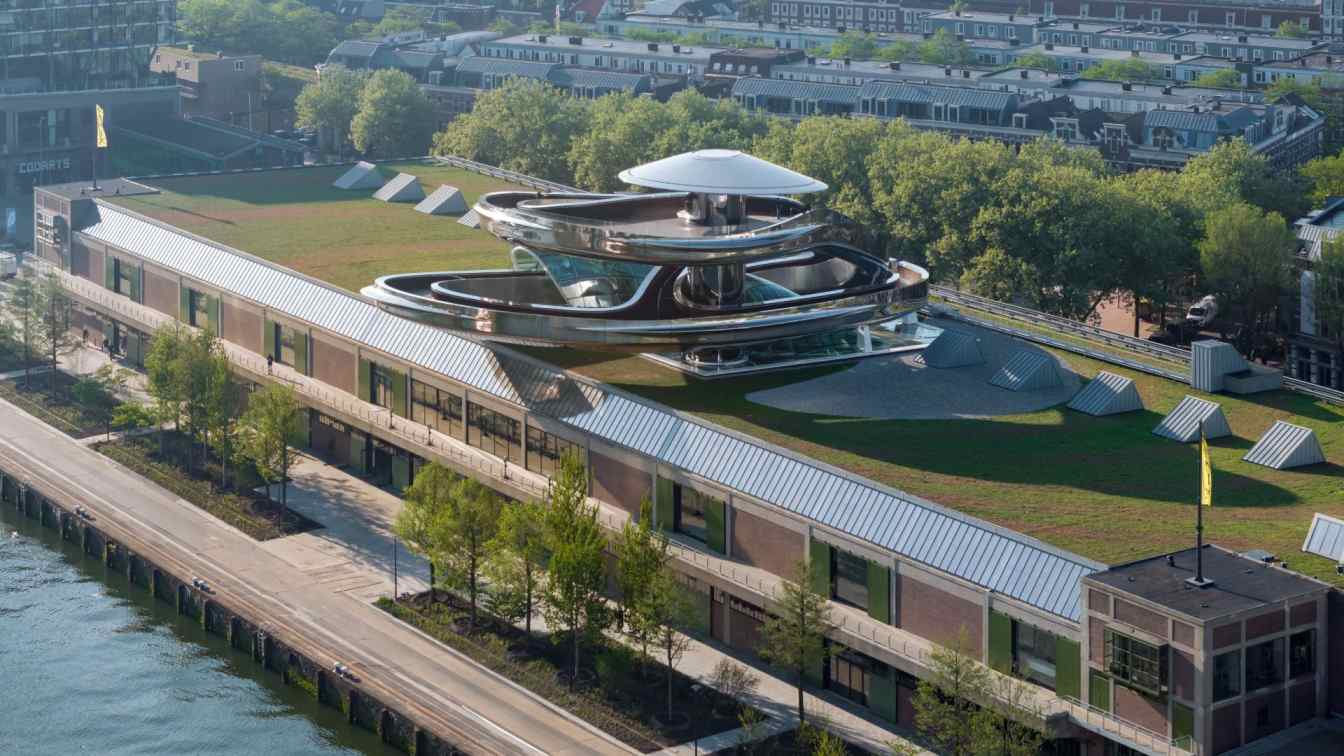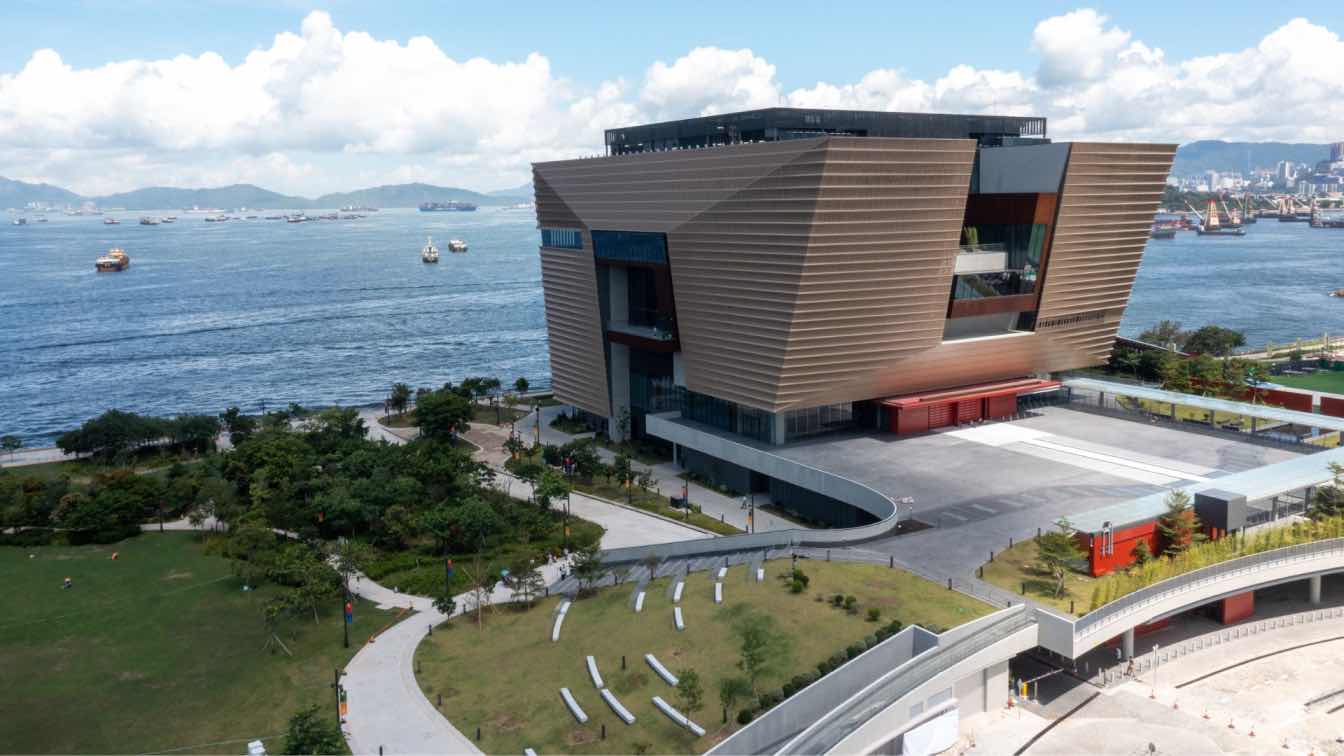INI Design Studio: In this emerging environment of knowledge-driven economic growth, it is imperative to inculcate a scientific temper in the community. The Gujarat Council of Science City, established by the Government of Gujarat, has developed the Aquatic Gallery to realize this vision. This 5th generation facility, part of the sprawling 200 acres Ahmedabad Science city, is India’s largest and first planned public inland aquarium, catering to the vision of edutainment. Attracting more than 1 million people annually, the Gallery is designed to bridge the gap between formal science education and the community at large.
The design of the Gallery is inspired by the intricate and harmonious forms in Nature; the spiralling, mysterious galaxies and the exquisitely proportioned shells found along the Gujarat coast. The primary inspiration is the nautilus, a marine mollusc, which has a beautifully segmented and spiralled shell, formed by a series of interconnected chambers, arranged in a precise and geometrically progressive manner.
A metaphor for the interconnectedness of science, the dynamic evolution of knowledge, and the continuous exploration of the universe, the circular, segmented and spiral organization of the viewing galleries, allows seamless movement through spaces of increasing size and continuity. A steel and glass canopy, resembling a cantilevered petal, amplifies the entrance's appeal, while the 27.5m diameter central atrium, crowned with a steel deck slab, provides a multipurpose space from where the galleries emanate; its form rises at the centre of the spiral, reaching upward for light through clerestory windows.

The exposed RCC exterior surfaces impart a dynamic visual quality, including shadow interplays on the façade, with openings resembling the gills of a fish. Visitors are treated to an engaging sensory experience, enhanced by well-integrated lighting, AV technology, projections, interactive features & environmental graphics. Both form & detailing prioritize structural stability & resilience against seismic activities & other natural calamities.
The Aquatic Gallery showcases 71% of Earth’s surface at an average depth of 3.5 km, featuring an underwater viewing walkway, multi-level viewing gallery, interpretation centre, & a monumental water-world map floor mural. The 72 exhibit tanks house 12,000 fishes of 180 species, native to various regions and categorized into zones. The life support systems (LSS) provide precise water parameters, including salinity, pH, & TDS levels, chemical oxygen, etc. Laboratories and quarantine areas facilitate regular checkup and testing. The exhibits are housed on the lower level, enabling most of the water loads to remain at ground level within a controlled environment.
The taller southern side self-shades portions of the building at all times, & service areas along the perimeter insulate the aquariums from direct heat, enhancing operational efficiency. The exterior utilizes exposed green concrete, fly ash bricks, metal and glass, creating an insulated envelope. High-performance, low-e glazing system, and intelligent automation, curtails energy consumption, while solar rooftop panels harness renewable energy. The centralized Chilled Water Energy Efficient System saves 90 tons of cooling, while Integrated Building Management Systems (IBMS) compatibility is maintained through RS-485 equipped meters. Rainwater harvesting, wastewater reuse and efficient plumbing fixtures raise the sustainability quotient.





































